From Our Backyard: This DIY mixologist has her own ‘cocktail garden’ outside her flat
In this instalment of our mini-series on sustainable garden-to-table lifestyles, we meet Melissa Mak, who combines her talent for growing edibles with her passion for making drinks, with intoxicating results.

Lecturer Melissa Mak can experiment with cocktails thanks to the herbs and other plants she grows in her HDB garden. (Photo: Vinvisual)
Lush and luxuriantly overgrown, the “green corridor” that Melissa Mak has created right outside her corner HDB flat in Tampines is so spellbindingly beautiful that despite its ninth-floor location, it still manages to attract its fair share of sunbirds and butterflies, who often fly all the way up for visits.
Mak’s garden is also a vertical urban farm stocked with more than 10 species of edible plants.
The most amazing thing is that Melissa started her gardening project five years ago as an experiment, without any professional help.
“A lot of people say ‘I don’t have green thumbs; I have black thumbs’. They think they need a lot of space to grow fruit and vegetables, but you don’t need a lot of space in the first place. You just need the right plants that can adapt to your space. It’s not that difficult. You just need a bit of ingenuity to get started,” said Mak, who’s a lecturer at a local institute.
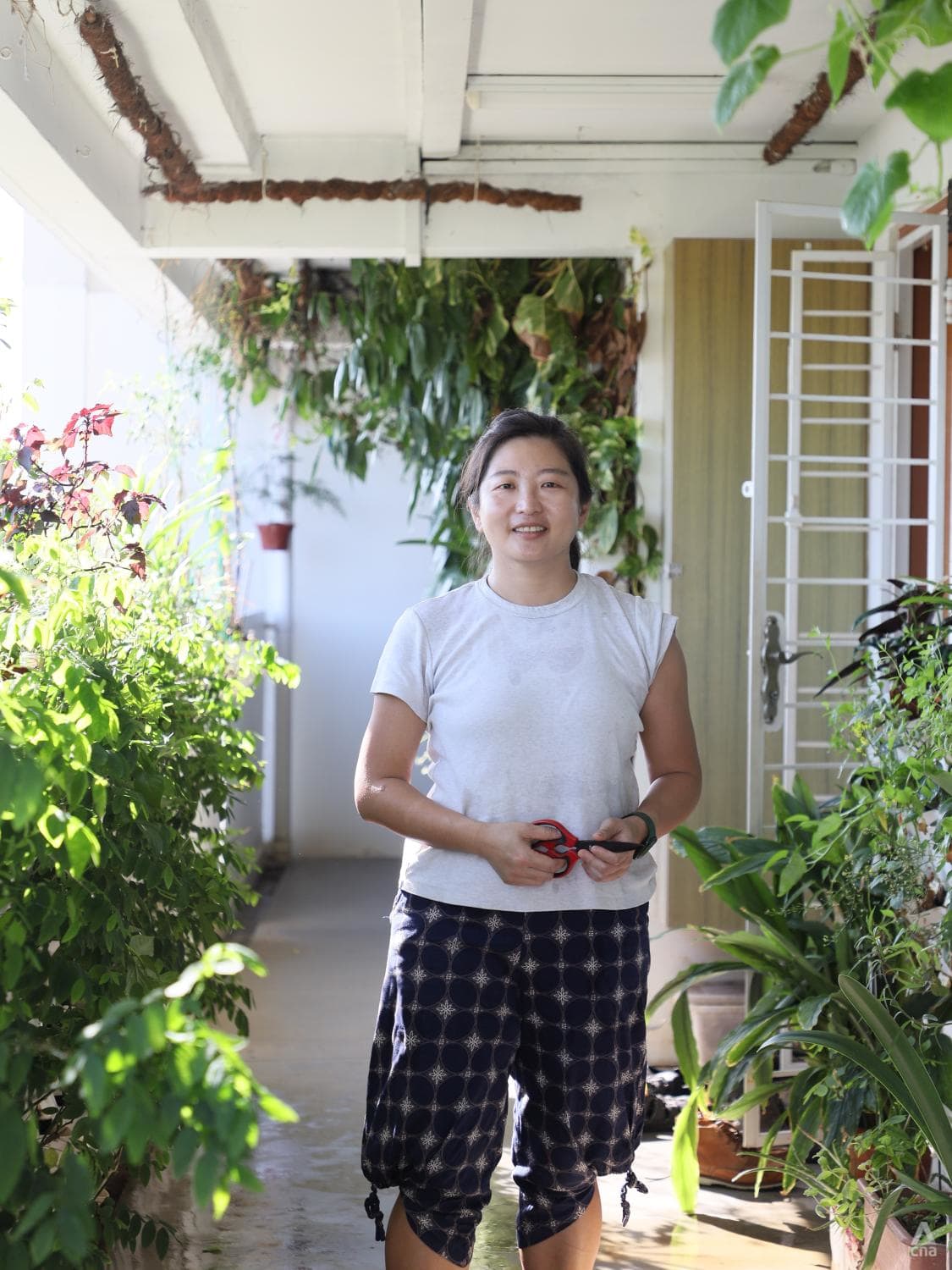
“When I bought my place, I had the intention to become quite self-sufficient in a certain direction. It took four bags of soil, one hardworking friend, and myself,” she recalled. “When we got started, it was a lot of work for two girls to get it going, but we did it!”
She was very deliberate in her choice of which plants to grow, basing her decisions on the plants’ ease of growth, and their ability to flourish within a limited amount of space.
Each day, she trims and waters her plants, and sweeps and cleans the garden area. She even makes her own compost, which means, raising earthworms, too.
There are herbs like mint, basil and Mexican tarragon, aromatics such as jasmine, curry and pandan, and food “crops” such as cherry tomatoes – “look, there are about 70 tomatoes on this plant,” she pointed out – and mani cai, a tropical leafy vegetable that’s also known as sweet leaf, sayur manis, or star gooseberry .
“Mani cai is very good for vegetable omelettes, soups, literally, anything, while the basil is used to make pesto sauce for pasta dishes,” she said.
Mint can be used to make tea, or added to sauces, salads and desserts. It also helps aid digestion, may improve cold symptoms, and freshens the breath.
Tarragon, which can be added to soups, or fish, beef, chicken, asparagus and egg dishes for flavour, also has many impressive health benefits, including the potential to reduce blood sugar, inflammation and pain, while improving sleep, appetite and heart health.
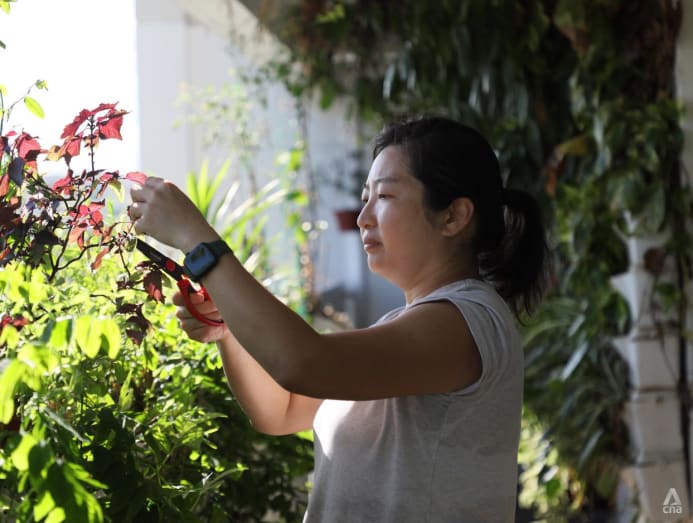
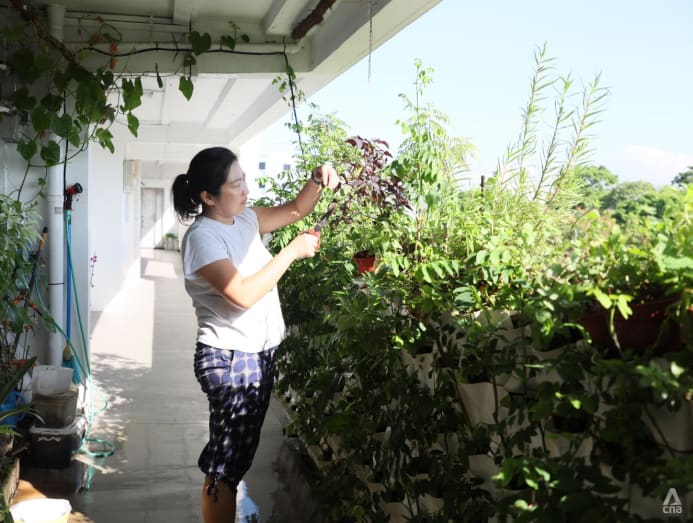

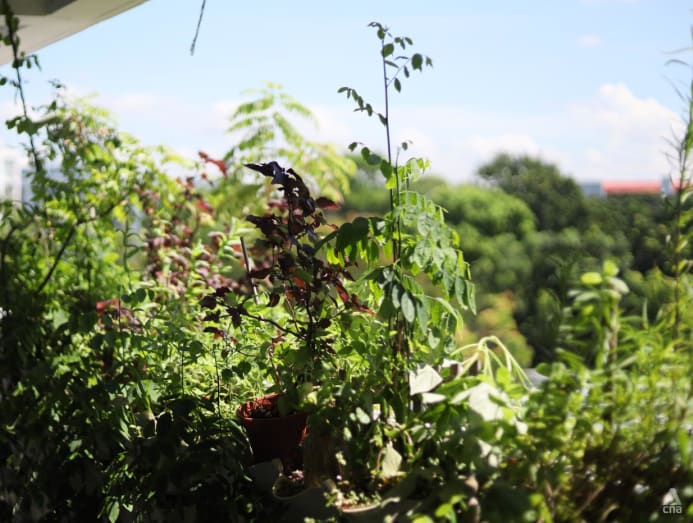
Aside from adding its distinctive aroma to curries, curry leaves are rich in Vitamins A, B, C and B2, iron and calcium, and have antibacterial and weight-loss properties; the leaves can even be ground to make a paste to sooth burns or help heal wounds.
A climbing plant with beautiful heart-shaped leaves turns out to be cucumber, and an attractive shrub with green and purple foliage is actually shiso. Treasured by Japanese, Korean and Chinese cultures for its herbaceous scent and spicy flavour, it’s often used as an edible garnish to accompany sashimi, and also has medicinal qualities.
“Shiso leaves have many benefits and are used to treat a variety of ailments,” she shared. “In Traditional Chinese Medicine, they are used as an antidote to food poisoning.”
“It’s very tasty, and makes your mouth feel fresher. Flavour-wise, it’s very interesting, with a spicy kick and note, a weird cinnamon tinge, a bit of basil, a bit of mint as well,” she said.
Who says you need to go to a bar for a fancy cocktail? Melissa Mak grows 10 types of edible plants, including shiso, outside her HDB flat. She uses these for her food and for experimenting with drinks.
Since Mak counts some of Singapore’s top bartenders among her friends, it’s no surprise she also has a keen interest in mixology.
“My bartender friends make their own syrups, so I was asking them how to do it. They were like ‘just one part sugar, one part water, and throw in whatever ingredients, and you’ve got a syrup!’.”
So, she started creating her own flavoured syrup using her home-grown shiso leaves, firing up a claypot, caramelising sugar in it, adding hot water, and finally, a generous handful of thoroughly-rinsed leaves, and letting the mixture simmer gently for several minutes. Once done, she lets it cool down, strains the liquid, and decants it into a clean jar, ready for use.
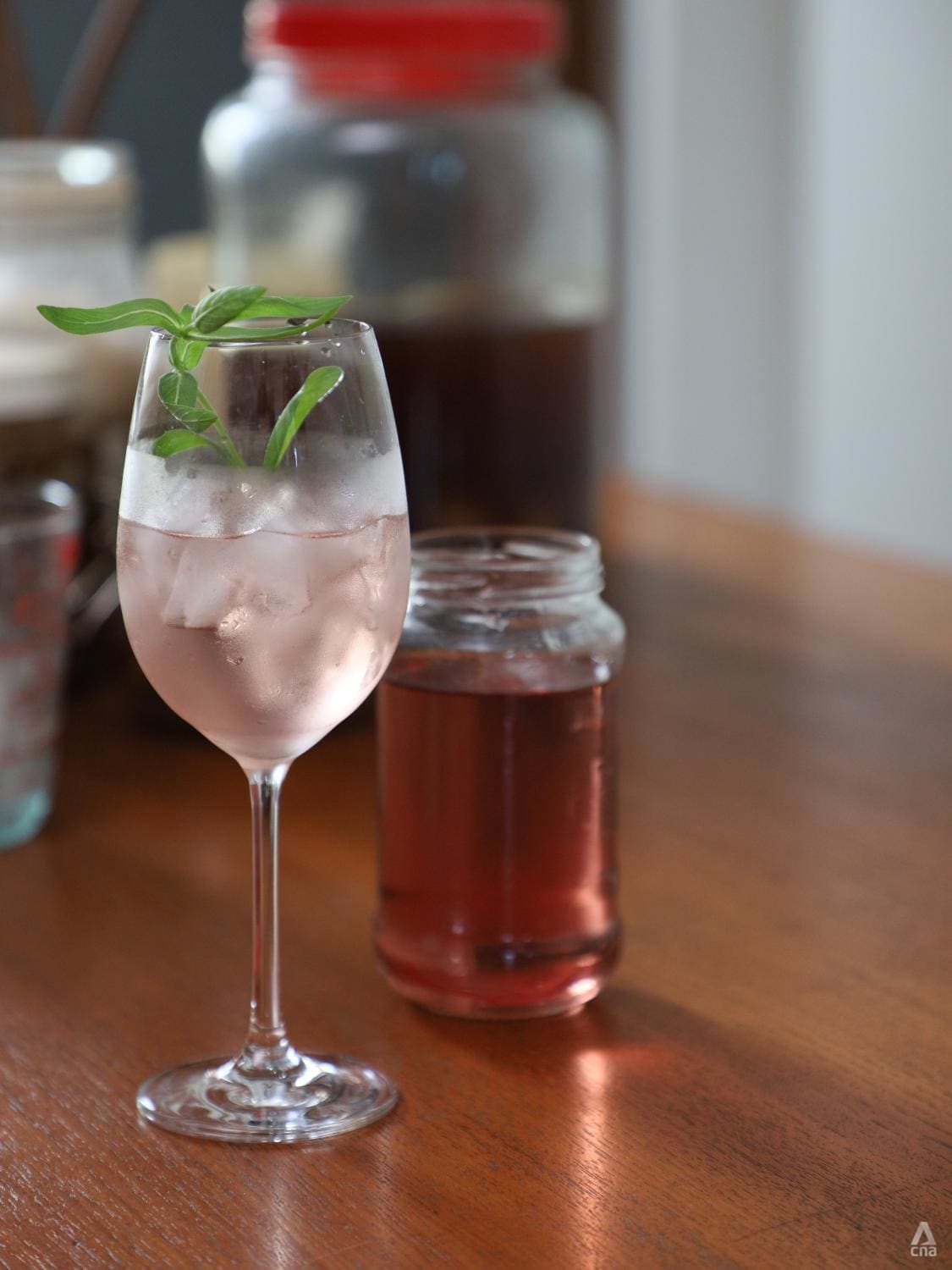
The end result is a sweet-tasting aromatic decoction in a pretty pink hue. “You can use it to make cocktails when you’re hosting your friends – they find it exciting, and you don’t have to pay 24 bucks to a bar for that, when you have your own bar!”, she quipped.
Mak combines equal parts of shiso syrup with vodka, adds in some ice cubes, stirs it all together, and for a truly professional flourish worthy of any chic hipster bar, garnishes it with a fragrant sprig of tarragon, freshly-picked from her garden.

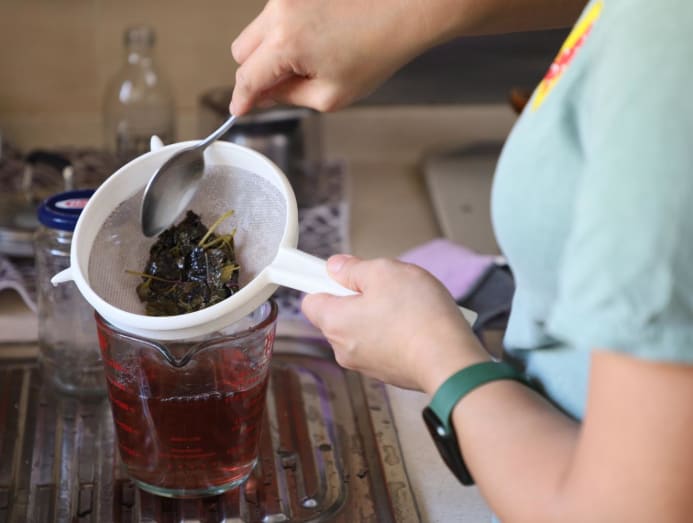
“I’ve also done other infusions like honey with jasmine flowers, vodka with mint extracts, and tarragon syrups. Pandan leaves are so simple to use – you just make tang yuan or glutinous rice balls, then throw in the leaves for instantaneous flavour,” she enthused.
In the meantime, Melissa is always ready to see where her inspiration takes her, when it comes to creating alchemy with her home-grown herbs and spices.
One shelf in her kitchen is dedicated to books with titles such as Natural Remedies Handbook: 50 Plants 1,000 Uses, and Koji Alchemy: Rediscovering The Magic Of Mold-Based Fermentation.
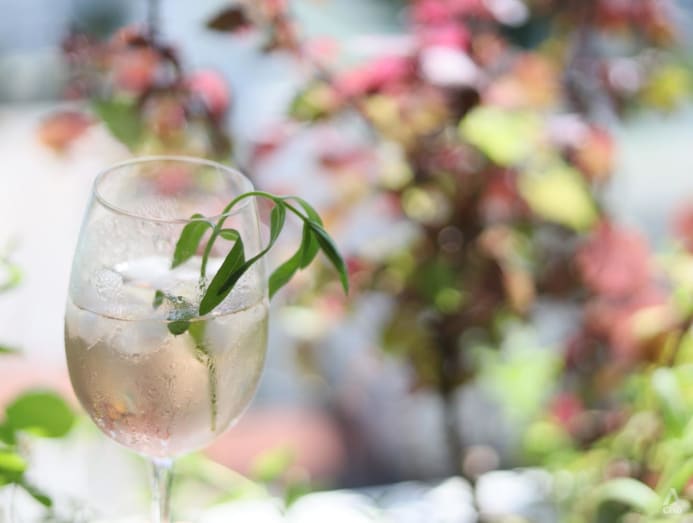
“Whenever I get a new idea – whether from the Internet, from friends or from my brain ... whatever things I could imagine, I just build and make it happen,” she said.
Over the years, as her garden has grown, so has Mak’s sense of self-sufficency and of her amazing capabilities.
“I’ve got more than enough to help my family and neighbours as well; I ended up being the farmer for everybody!” she laughed.








